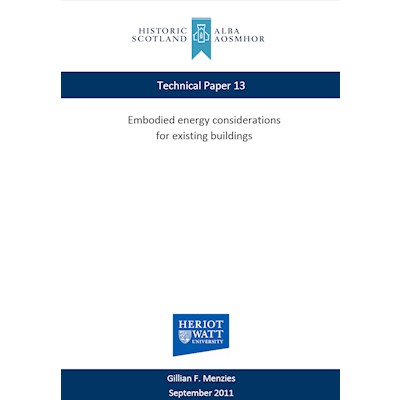Historic Scotland Technical Paper 13 outlines the importance of life cycle analysis in assessing the sustainability of new buildings and of maintaining, refurbishing and replacing existing buildings. Intending to support a discussion about energy and carbon assessment of existing buildings, the paper provides an introduction to life cycle thinking generally, before presenting considerations specifically for existing buildings.
The paper demonstrates that, although embodied energy and carbon is important generally, the energy used and carbon emitted in the past, i.e. the sunk embodied energy and carbon, does not matter for mitigating the energy consumption and carbon emissions of today and the future. Nevertheless, there are strong arguments for retaining existing buildings.
The use of durable, long-lasting materials – as used in many older existing buildings – can reduce refurbishment cycles, therefore requiring less energy and carbon long-term. Decisions for energy efficiency upgrades should be made on grounds of energy, carbon and financial costs, but other factors need to be considered, too.
Historic buildings, for example, have a cultural and educational value. They can play a strong role in creating identity and have a significant impact for regeneration and tourism. Retaining existing buildings and seeking to enhance their energy performance in sensitive ways is in keeping with building conservation, sustainability and progress towards a low carbon society.
-
Audiences:
Planners and Owners, Conservation and Heritage Enthusiasts -
Date Published:
01 September 2011 -
Publisher:
Historic Scotland -
Publication Types:
Technical Paper, Technical, Advice & Guidance -
Format(s):
Download PDF
Technical Paper 13 (1.62 MB) -
Language:
English

